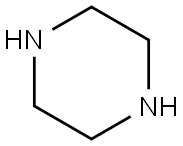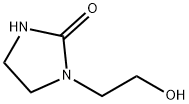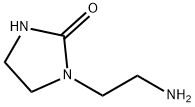
1,4,7,10,13-Pentaazatridecane synthesis
- Product Name:1,4,7,10,13-Pentaazatridecane
- CAS Number:112-57-2
- Molecular formula:C8H23N5
- Molecular Weight:189.3

141-43-5
921 suppliers
$9.00/10g

110-85-0
589 suppliers
$5.00/5 g

103-76-4
532 suppliers
$6.00/25g

140-31-8
263 suppliers
$16.18/25ML

112-57-2
334 suppliers
$18.00/25g

107-15-3
0 suppliers
$11.19/25ML

111-40-0
525 suppliers
$13.44/25ML

112-24-3
441 suppliers
$13.44/25ML
Yield:-
Reaction Conditions:
with ammonia;hydrogen in water at 92; under 26463 Torr;Temperature;
Steps:
10.S; 10.T
[0044] Many permutation and combination of metals and supports were tried before arriving at the selective Ni-Cr Catalyst, some of the major ones are listed below. In all approximately four thousand, hourly tests (e.g. FIG. 3) were carried out. [0045] When aminations were tried using the above range of catalysts, conversions ranged from zero to more than 50% and selectivity of EDA went from zero to 80%. The pressures used were between 71 psig (5 Kg/cm2G) and 710 psig (50 Kg/cm2G) and the reactor inlet temperature could be varied from 70 to 200° C. It was surprisingly found that for the catalyst of the present invention, the pressure range was narrowed to 500 to 710 psig and the temperature range from 70 to 130° C. [0046] The reactor feed composition is extremely important to ensure good conversion and selectivity. It has been found that factors such as Temperature, Pressure, Contact Time, Nitrogen to Carbon Mole Ratio N/C, Water Content of Feed, Hydrogen Content of Feed affects the conversion and product selectivity. [0047] The amination process of the present invention is preferably carried out at temperatures between 90 and 130° C., and the pressures between 500 and 710 psig. Preferably, a contact time of 3 to 7 minutes is sufficient. Contact time and N/C ratio are inter-dependent. For example, for a given mass flow of glycol or alkanolamine at high ammonia/alkyl (N/C) ratios the contact time is less than at low ammonia to alkyl ratios. Water content of 10% or more in the feeds seems to enhance the speed at which ammonia gets into the liquid phase in order to undergo the reaction, hydrogen content of the vapor is about 40-60%. Ammonia to alkyl ratios as high as 20 to 1 have been proposed in some patents but it has been found that ratios in the range of 3:1 to 7:1 are adequate and result in very significant energy savings when the design of full scale plant is studied. [0048] The test reactor as in FIG. 1 is a mini plant with MEA/MEG feed control, NH3 feed control, Hydrogen feed control, and collection of 100 percent of the product coming from the reactor. In FIG. 1 we describe how the unit is operated and the critical control parameters and measurements made. In Table 2 some test results for the Catalysts 1, 2, 6, 7 and 12 listed in Table 1 are shown. Results for a series of daily tests are shown in Table 3.
References:
Williams, Ian;Williams, John Christopher;Maya-Hervandez, German Maya;Hernandez Salas, Lilia Patricia;Lopez Guerrero, Miguel Angel US2014/213823, 2014, A1 Location in patent:Paragraph 0044-0049

107-06-2
441 suppliers
$14.00/25g

110-85-0
589 suppliers
$5.00/5 g

112-57-2
334 suppliers
$18.00/25g

111-40-0
525 suppliers
$13.44/25ML

112-24-3
441 suppliers
$13.44/25ML

107-06-2
441 suppliers
$14.00/25g

110-85-0
589 suppliers
$5.00/5 g

112-57-2
334 suppliers
$18.00/25g

107-15-3
0 suppliers
$11.19/25ML

111-40-0
525 suppliers
$13.44/25ML

112-24-3
441 suppliers
$13.44/25ML

3699-54-5
187 suppliers
$7.00/1g

6281-42-1
117 suppliers
$13.00/250mg

111-40-0
525 suppliers
$13.44/25ML

112-57-2
334 suppliers
$18.00/25g

![N-[2-(1-piperazinyl)ethyl]ethylenediamine](/CAS/GIF/24028-46-4.gif)